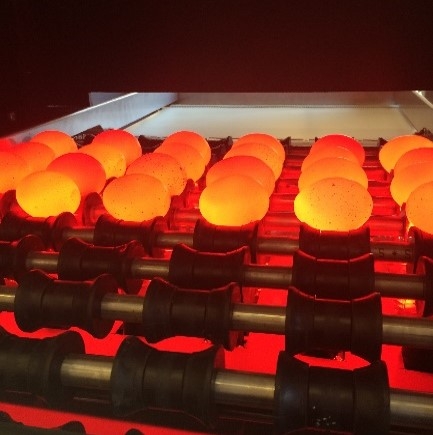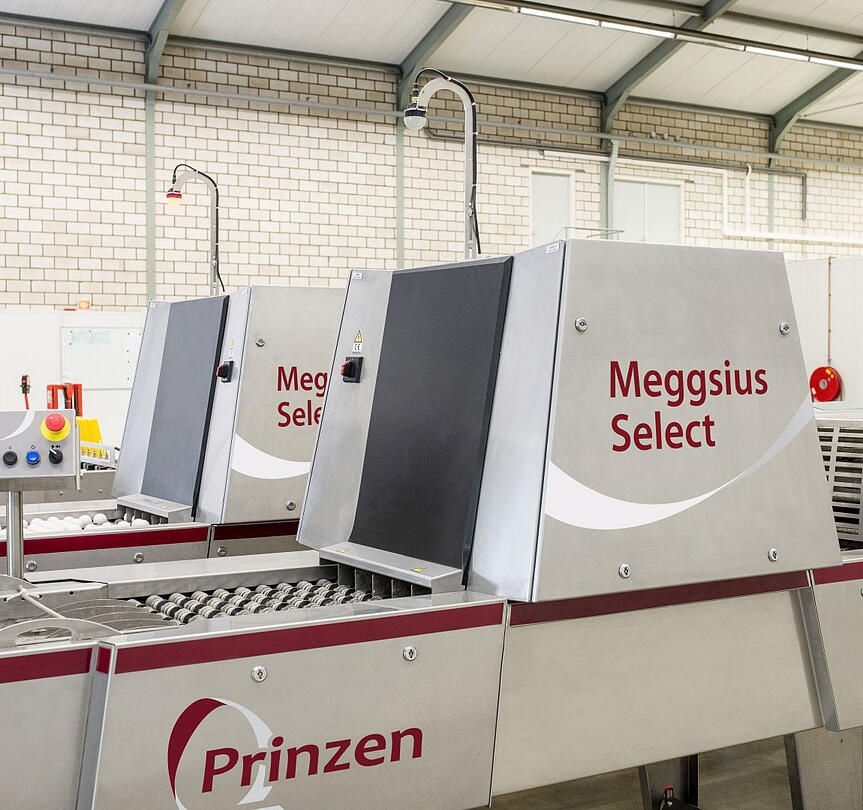
first-grade data and deep learning.
As part of the Vencomatic Group, Prinzen is a solution provider for egg handling and developed the Meggsius Select for automatic egg inspection and sorting. This system inspects every individual egg on exterior indicators such as quality and dimensions, and can detect egg-shell fouling and cracks. For this, we developed a machine vision system and the accompanying inspection software based on AI (artificial intelligence), in this case deep learning using neural networks. It enables the sorting of first- and second-grade eggs and, in addition, yields data on egg quality and reject categories (per hen house and/or day totals) that can be used for further analysis.

Highlights
- 40.000 eggs per hour
- smart lighting and imaging schemes
- efficient algorithms
- user-friendly training tools
smart lighting, efficient computing.
For imaging the individual eggs, we designed a smart lighting scheme. During the process, the eggs are repeatedly rotated over 90°, to collect images of all views. The combined set of images are used for egg inspection using various deep learning networks for feature extraction: egg localization, egg contour detection and classification of defects such as cracks and fouling. The system can process 40,000 eggs per hour, which requires a lot of computing power. To optimize the trade-off between processor power and algorithm quality, we trained and tested multiple AI networks in a genetic algorithm to arrive at an optimal, efficient network.

“we help to improve algorithm quality, production output and animal welfare.”
Development of the Meggsius Select was a close collaboration with Prinzen. After solving typical vision challenges such as lighting and camera set-up, we quickly transferred our design to them for industrialization, so that we could focus on algorithm and software development. We provided them with the source code as well as with dedicated annotation tooling. In this way, after our pre-training of the deep learning networks, Prinzen can take over training to further improve algorithm quality. In the meantime, we are teamwise considering options for extending the functionality, for example to use egg rejection trends in hen house management for improving production output and animal welfare.


